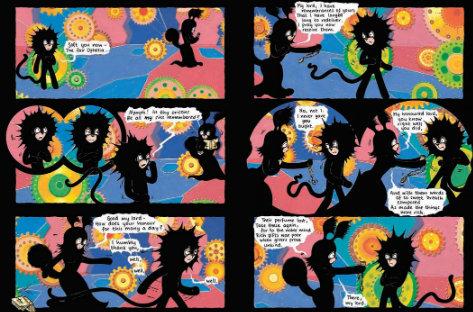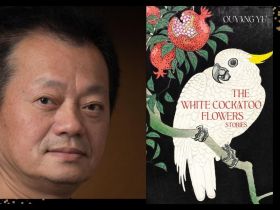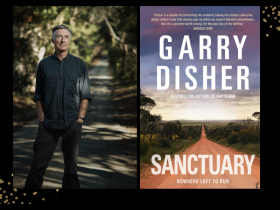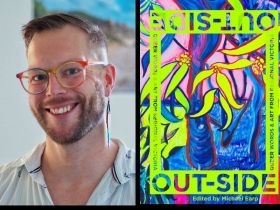‘Comic aren’t just for kids anymore!’ This all-too-familiar headline has become a depressing journalistic staple in recent years, as newspapers and magazines come to grips with the apparently ground-breaking fact that comic books have, as all art forms do, evolved as a medium.
Such articles – usually written by someone who hasn’t picked up a comic book since they themselves were a child – invariably run along the following lines: Comic books aren’t just about superheroes anymore! Comic books can be serious! And perhaps most patronising of all: This book I’ve been asked to write about is far too complex to be called a comic – why, it’s almost literature!
This is not going to be one of those articles.
Comics books have long been, and continue to be, a serious art form. Yes, some comics are garish, childish and simplistic – just as some novels are. But you don’t see comic book fans contemptuously dismissing all books just because of Fifty Shades of Grey, do you? That’s because, rather than complaining about other forms of literature, a lot of comic book fans are busy writing and drawing their own, rather excellent comic books – a fact which hasn’t escaped the attentions of Australian publishers.
Browse the shelves of your local independent bookshop and you’ll probably find one or more of the following Australian graphic novels proudly displayed: Shaun Tan’s The Arrival (Lothian, 2006); Nicki Greenberg’s The Great Gatsby: a graphic adaptation (Allen & Unwin, 2007) and Hamlet (Allen & Unwin, 2010); Bruce Mutard’s The Sacrifice (Allen & Unwin, 2008) and The Silence (Allen & Unwin, 2009); Mandy Ord’s Sensitive Creatures (Allen & Unwin, 2011); and Pat Grant’s Blue (Giramondo, 2012).
Pick up a literary journal, such as Meanjin, Overland, Voiceworks and Going Down Swinging, and you’ll find new and original comics appearing among the essays and short stories. Venture into a specialist comic shop, such as Brisbane’s Comics Etc or Adelaide’s Dynamic Duo Comics, and you’ll find even more, some of them self-published, others released by the likes of Perth’s Gestalt Comics or Melbourne’s Pikitia Press.
In short, Australian comic books and graphic novels are thriving, developing a cultural cachet they haven’t had since a unique set of circumstances gave birth to the Golden Age of Australian comic book publishing in the 1940s.
The Golden Age
‘The genesis of Australia’s home-grown comic book industry in the 1940s is really attributable to the outbreak of the Second World War,’ explains Kevin Patrick, PhD student at the Centre for the Book at Monash University and author of the historical blog, Comics Down Under.
‘As a result of Australia’s participation in the conflict there were embargoes placed on imported American publications, including books, newspapers, magazine and comic books. You also had British publishers who, because of their own war effort, were rationing newsprint supplies, which meant that British publishers could no longer print as many copies as they would normally export to their traditional overseas markets such as Australia and New Zealand. Which pretty much created a kind of cultural vacuum, if you will, for local publishers, writers and artists, who until that time really did struggle to compete with the vast amount of cheaply imported and cheaply syndicated comic magazine and comic strip material that was being brought into the country.’
The result was a boom in locally produced comics, Patrick says.
‘Suddenly local publishers, writers and illustrators had a captive market virtually almost to themselves, whereby they no longer had to compete with imported comics … Here in Melbourne there was a firm called Atlas Publications, which had their own home-grown superhero called Captain Atom, which at the end of its first year of publication, 1948, was selling over a million copies a year, which is quite staggering when you think that Australia’s population was barely nudging eight million at the time!’
The Modern Age
The Golden Age of Australian comic books ended in the late 1950s, and it’s taken decades for the spotlight to be turned back onto local creators.
Writer/illustrator Nicki Greenberg believes that ‘adventurous and passionate publishers and creators’ have been instrumental to the recent successes of Australian graphic novels.
‘There’s lots of wonderful work being produced – you look at Mandy Ord, Pat Grant, and loads of people popping up everywhere – and in a publishing climate which is really difficult at the moment, you have publishers like Allen & Unwin making these beautifully produced, really well-promoted graphic novels,’ she says.
When Greenberg first took her graphic novel adaptation of The Great Gatsby to Allen & Unwin, circa 2003, there was no mainstream publishing of graphic novels in Australia.
‘Allen & Unwin’s first response to me about Gatsby was “we love it but we don’t know if we can make it work financially; we don’t know if there’s a market for these things”. Five years later, when they took it on and published it – and that was a huge and adventurous step, because they were really one of the pioneers of doing this in mainstream publishing – they made a success of it, and that was amazing. I think they helped to change public appreciation of this kind of work in Australia.’
Bernard Caleo, author and publisher of independent Australian comic books (and also the co-director of a new documentary, Graphic Novels! Melbourne!), agrees with Greenberg that ‘the publishers are as much a part of this as the creators are’.
‘In a sense, we’re all in this together,’ Caleo tells ArtsHub, although he recognises that publishers and artists may sometimes have different motives.
‘I would say that the move by publishers is speculative, based on what they’ve seen from overseas. In the case of the publisher at Allen & Unwin, Erica Wagner, it was her experience of going to the Bologna Book Fair [in the early noughties] and seeing what impact those books are having within the lists of book publishers … and thinking that there must be something like this at home, and being ready to argue it back to her bosses, basically; to say ‘come on, let’s take a punt with this.’
The artistic seeds of the current Australian comic book boom, Caleo believes, were sown much earlier, in the 1980s.
‘That extremely prolific period in the Eighties and Nineties of independent comics from America – your Daniel Clowes, and Chris Ware, and particularly the Hernandez Brothers; in a way I guess you’d call it the Fantagraphics push – the people who were reading those comic books when they were coming out and getting very excited by what those comics said – and my proposition is that it’s particularly about voice, because in each of those comics you can really hear their creators’ voices – have now developed voices of their own,’ Caleo explains.
‘That Fantagraphics crew influenced a generation of comic book makers who are now of age, in terms of their own voices having matured, and abilities having matured to such a degree that they’re able to do the sustained work that can produce a graphic novel of substance.
‘And the birth of the graphic novel happens at the same period, in the mid-1980s, with the publication of Maus, The Dark Knight Returns, and Watchmen – all of them collections [of individually published comics], and all of which made ‘the graphic novel’ a viable literary form published by capital-P publishers. And that idea, of comics as literature, has been growing ever since.’
And it’s not just graphic novels released by major Australian publishers that are flourishing; traditional comic books and small publishers, too, are booming, as evidenced by the rapid growth of Perth’s Gestalt Comics.
Founded in Applecross, Western Australia, in 2005, Gestalt now has offices in Perth and Tokyo. During its seven years of operation to date, the company has garnered two Aurealis Awards (Australia) and two Communications Arts awards (USA), whilst reaping international acclaim for two of its series, Changing Ways by Justin Randall and The Deep by Tom Taylor and James Brouwer.
‘There seems to be more activity in Australian comics right now than I’ve known over the last decade,’ says Wolfgang Bylsma, Gestalt’s Editor-in-Chief, ‘[and] seeing new independent publishing houses join the fray gives me hope. The rise of DiezelPunk (established by Wolf Creek writer/director Greg Mclean) and Milk Shadow Books certainly seem to bolster the “golden age” perspective.
‘There are other elements of the community that also help inspire and encourage each other, such as the OzComics weekly draw-off challenge on Facebook, not to mention initiatives like Squishface, the positive response to as DiezelPunk’s crowdfunding campaign, and the massive support from the convention circuit – Supanova, OzComic-Con, Armageddon et al,’ Bylsma says. ‘All point to this being a hugely positive time to be involved in Australian comics.’
The Future
So what of the future? Will Australian comic books and graphic novels continue to have their day in the sun?
‘The last time Australian comics had a golden moment it collapsed, back in the fifties,’ Bernard Caleo says.
‘But to me it seems that the growth is such, at the moment, and the voices are so strong, that it will keep on growing. The graphic novels are really strong, but more importantly – as importantly – the mini-comics, the anthologies, the studios; in effect the comics-as-art movement is really, really healthy. Every time I look there’s another voice, a really strong new voice, and I can’t wait to see what comes out of that new creator’s hands.’





